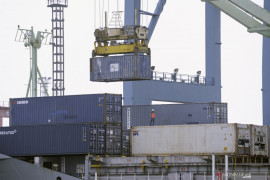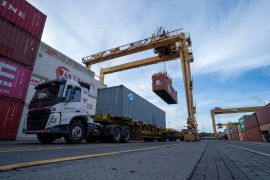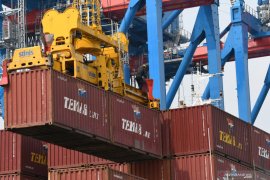The decline in the oil and gas trade balance deficit is the cause of the June 2019 trade balance surplus. This surplus improves the trade balance during January-June 2019.Jakarta (ANTARA) - The June 2019 trade balance surplus of US$196.0 million has improved the trade balance deficit in January-June 2019, Minister of Trade Enggartiasto Lukita has revealed.
The non-oil and gas trade balance in June 2019 recorded a surplus of $1.2 billion, while the oil and gas balance was a deficit of $966.8 million. "The decline in the oil and gas trade balance deficit is the cause of the June 2019 trade balance surplus. This surplus improves the trade balance during January-June 2019," the Trade Minister said through his statement received here Wednesday.
However, the cumulative deficit during January-June 2019 was still quite large, nearly $1.9 billion, he continued. The deficit was due to the large deficit in the oil and gas trade balance which reached $4.8 billion.
Meanwhile, in the same period, the non-oil and gas trade balance contributed a surplus of $2.8 billion.
The trading partner countries contributing the largest non-oil and gas trade surplus during June 2019, are the United States, India, the Philippines, the Netherlands and Malaysia. The surplus reached $12.9 billion.
Meanwhile, China, Thailand, Australia, Japan and Argentina became partner countries which contributed to the largest non-oil and gas trade deficit totaling $14.3 billion.
"The income from non-oil and gas exports in the first half of 2019 prompted the Ministry of Trade to re-formulate a strategy to increase exports of high-value and competitive products to achieve the 2019 non-oil and gas export target," the minister noted.
Meanwhile, export performance in June 2019 reached $11.8 billion, down 9.0 percent compared to exports in June 2018 (Year on Year/YoY).
The decline was due to the decrease in oil and gas exports by 54.7 percent (YoY) and a drop in non-oil and gas exports by 2.3 percent (YoY).
Cumulatively, non-oil and gas exports in the first half of 2019 amounted to $80.3 billion, down 8.6 percent compared to that in the same period in 2018. This decline was slightly deeper than the export growth in the January-May 2019 period which fell 7.3 percent.
During the first semester of 2019, exports from all sectors also weakened.
The export value of the mining sector fell 15.4 percent, while last year it rose 36.2 percent. The industrial sector fell 4.6 percent, while last year it was up 5.4 percent, and the agricultural sector fell 1.0 percent, while last year it also fell 7.8 percent.
The oil and gas sector was the sector that experienced the largest decline in exports. It was down 27.7 percent (YoY), while the first semester of last year exports increased 11 percent (YoY).
The weakening of the export performance from January to June 2019 was due to the price pressure of some of Indonesia's main commodities in the international market, such as coal and crude palm oil (CPO), even though the export volume had increased.
"Global conditions still suppress the performance of non-oil exports during January-June 2019," he said.
Related news: All countries experience a slowdown in exports: trade minister
Related news: Indonesia's April trade balance nosedives to US$2.5 billion deficit
Related news: Indonesia's trade balance records USD0.33 billion surplus in February
Translator: Sella Panduarsa Gareta/Bambang
Editor: Sri Haryati
Copyright © ANTARA 2019











